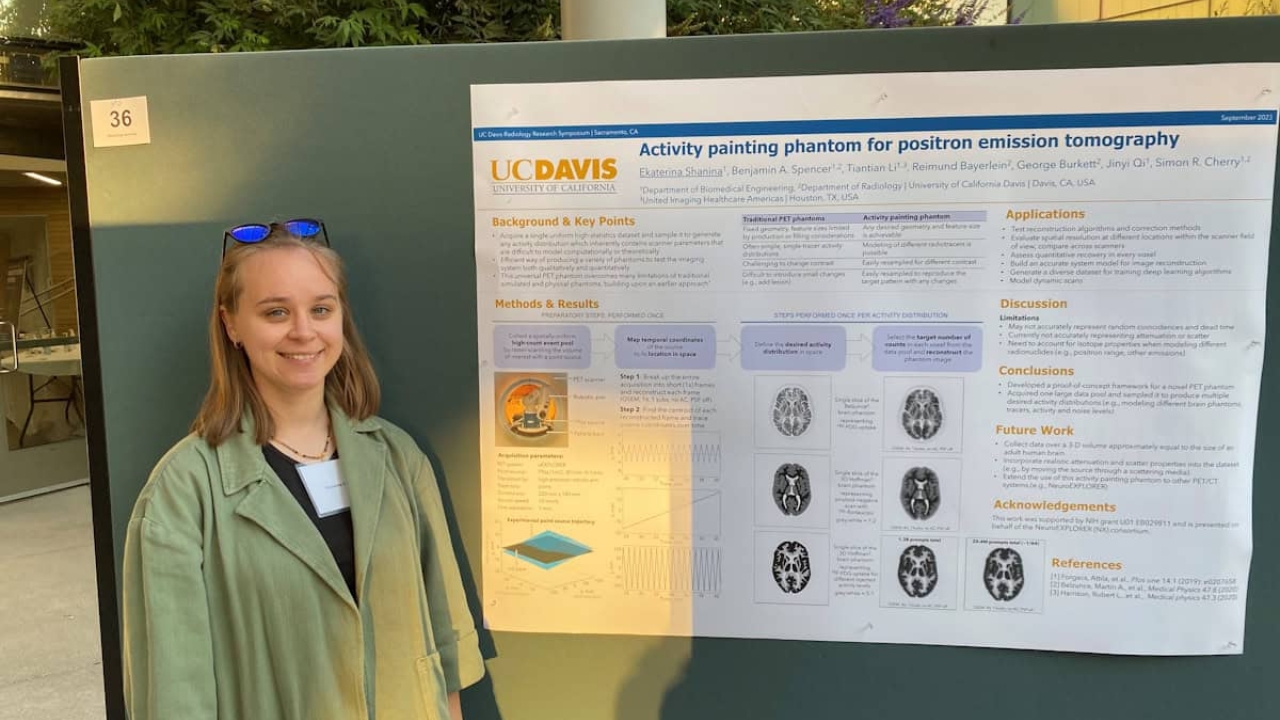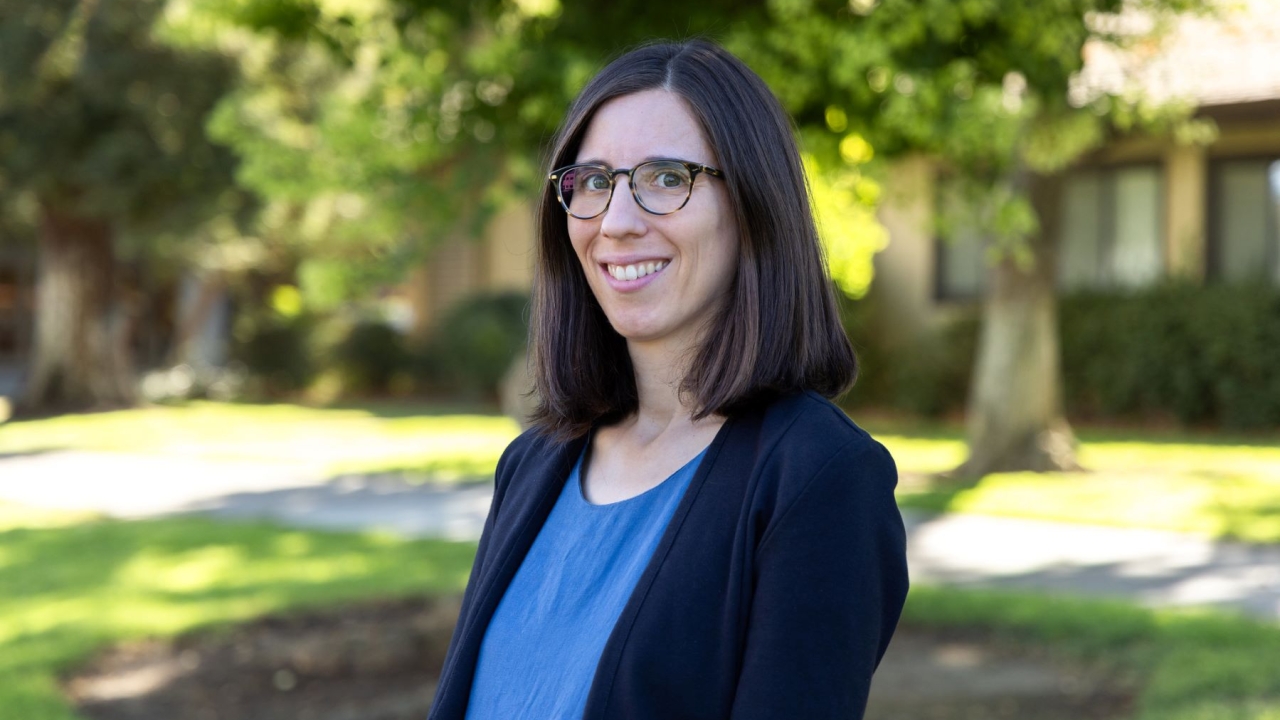Generous Gift Establishes New Engineering Design Space
Richard and Joy Dorf have seen the future, and persuasive communication will be crucial.
In an era when dialogue too frequently deteriorates to 140-characters, the UC Davis College of Engineering is taking a progressive lead on reinforcing the need for students to develop superior interaction skills.

The first phase was a freshman pilot course that debuted fall quarter: ENG 098, Introduction to Engineering Design, which emphasized the primary goals of design, teamwork and technical communication. Students were grouped into teams that developed a product in response to a design challenge, and then pitched their work during oral, slide and poster presentations.
“The goal was to learn not only how to present, effectively and efficiently,” said instructor Spyros Tseregounis, a professor in the Department of Chemical Engineering and Materials Science, “but also how to evaluate a good presentation.”
Pleased by the success of this pilot course, The College of Engineering is proceeding with the master plan’s second phase: the creation of a space specifically designed to accommodate ENG 098. By the upcoming fall quarter, following a summer of construction, 1065 Kemper will have transformed into a sleek Design and Communications Space named for Richard and Joy Dorf, whose $250,000 gift is making it happen.
“The idea is fantastic,” said Richard Dorf, an emeritus professor with dual appointments in the UC Davis School of Management, and the Department of Electrical and Computer Engineering. “I can’t think of anything else that we’d rather stand behind. Joy and I see this as proof that the College of Engineering values communication as much as design.”
Both Richard and Joy Dorf place a high value on effective communication skills. Joy is well known for her long service as a Presbyterian minister, and recognized locally as the former associate pastor at Davis Community Church: a career that required focus, a command of language, and comfortable presentation skills.
“Effective communication today requires a greater bank of sensitivities than most people have learned,” she notes. “In our multi-cultural era, presentation and word choice have become more challenging, and more crucial.”
Richard gained his respect for successful discourse back in the 1950s, when as an undergraduate electrical engineer at New York’s Clarkson College (now Clarkson University), he was required to take a communications course. The class, modeled after one offered at MIT, required each student to give some sort of presentation. The parameters were flexible enough that Richard’s “presentations” wound up being starring roles in campus productions of the plays Mister Roberts and Stalag 17.
To this day, he credits those early stage experiences with enhancing the lecture skills that made him more effective as a classroom instructor. The Clarkson course instructor also focused on the importance of written communication, a lesson that Richard also took to heart during a career that has seen him author more than 30 books.
This philosophy was instrumental to the design of ENG 098, as originally envisioned by Tseregounis and Jim Schaaf, a lecturer in the Department of Mechanical and Aerospace Engineering (MAE), and assistant dean of undergraduate programs and advising; Jean-Pierre Delplanque, also a professor in MAE, and associate dean for undergraduate studies; and Jean VanderGheynst, a professor in the Department of Biological and Agricultural Engineering, and associate dean for research and graduate studies.
“The earlier we help engineering students appreciate the need for developing a crisp, polished presentational attitude, the better,” Tseregounis said, at the time.
The reconfigured Kemper classroom will encourage precisely that mindset.
“We needed a highly flexible space, akin to what you’d see in a lot of start-up companies,” Schaaf explains. “A space where students could brainstorm and sketch out their ideas, and then prepare and deliver presentations.”
The room will contain six “zones,” one for each team of four to five students; each zone will include a table surrounded by mobile whiteboards, for quick ideation. Each zone also will have a projector, so students can connect their laptops and practice presentations that would require the use of audio/visuals. The instructor will have a central “master control station” that can, if desired, share the activities taking place within a given student group, with everybody else in the room.
The tables, whiteboards and projectors will be mobile, so the room can be converted into a standard lecture hall or seminar-style space, if the instructor so desires.
Thus far, the room is being designed specifically to accompany the new ENG 098 course. Whether clubs or other student groups will have access, for alternative uses, is a possibility that remains under consideration.
“This is a unique opportunity for us to showcase modern teaching styles that will allow students to participate in the design of their own projects, while also sharing their ideas with the entire class,” Schaaf continues. “We also wanted to encourage students to work across disciplines: not just (for example) mechanical engineers working with other mechanical engineers.
“This is a vision of the future: of what we can do throughout the core curriculum. Once we get this first course solidly established, we’ll prototype another one at the sophomore level, with the goal of getting more hands-on activity throughout the curriculum.”
“It’s exciting that every engineering student will take this freshman class,” Joy Dorf said. “This is what our lives call for: people who can communicate effectively. It’s a very important skill, and making it part of the engineering curriculum delivers a message: You can know your formulas every which way, but they’re not much good if you can’t successfully share the results.”
The Dorfs wanted this prototype design space in a highly visible location: one that students would see frequently, and thus be encouraged to experience. 1065 Kemper is the perfect choice, positioned in a prime spot not far from the Dean’s office complex, and across the hall from the already popular Leadership in Engineering Advancement Diversity and Retention (LEADR) Student Center, in Room 1050.
“Every engineering student walks down that hallway at least once a week,” Richard notes, with a smile. “It couldn’t be better!”
“Looking forward,” Schaaf notes, “we envision many such facilities throughout the College of Engineering, similar to what we’re creating in 1065 Kemper. This is something that each building should have: go-to places for students or teams desiring a creative space.”
“That’s how it works,” Joy Dorf agrees. “With our gift, we’re building on somebody else’s shoulders; eventually, somebody else will build on ours. We’re part of an ongoing stream of people who have committed a large part of their resources to this campus.”




